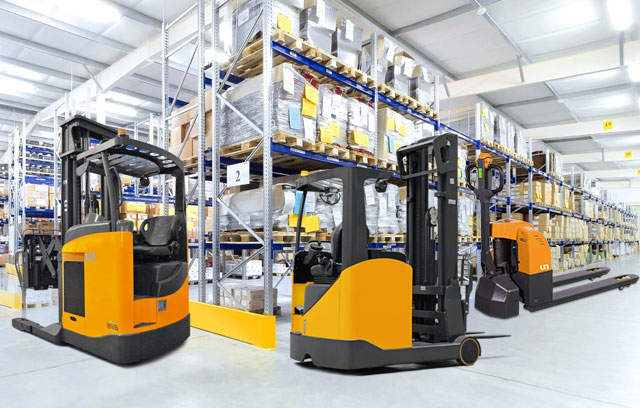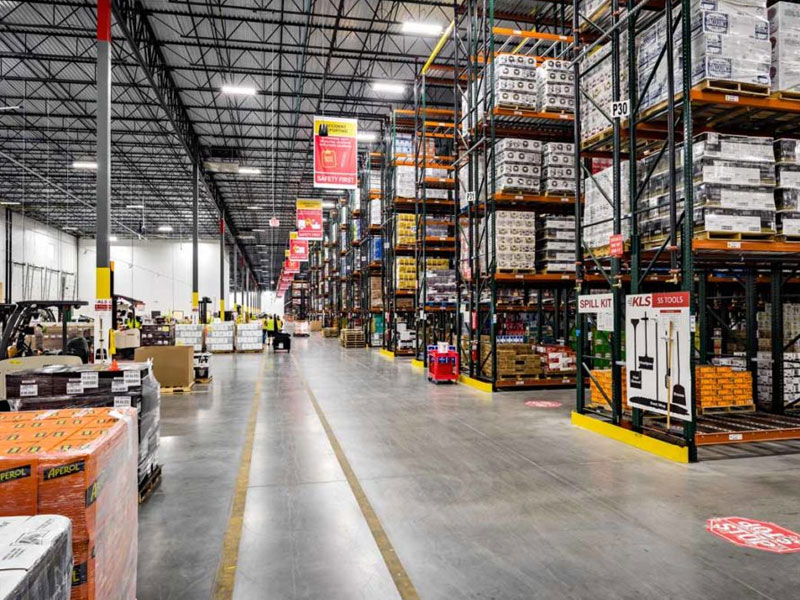Daily cleaning and maintenance
The daily cleaning of pallet trucks is an important part of ensuring the normal operation of the equipment. Dust, stains and debris on the surface and wheels of pallet trucks should be cleaned regularly to prevent foreign objects from entering the axle or hydraulic system, causing wear or failure of parts. When cleaning, you can use a clean rag to wipe, and a proper amount of detergent can be used for serious dirt, but avoid using highly corrosive chemicals to avoid damaging the metal surface and oil seals. Daily cleaning can not only extend the service life of the pallet truck, but also improve the safety and comfort of operation.
Hydraulic system inspection
The hydraulic system is a key part of the lifting and lowering of the pallet truck. During daily maintenance, the oil level and cleanliness of the hydraulic oil should be checked. Insufficient or contaminated oil will affect the lifting performance of the pallet truck. Regular replacement of hydraulic oil is a necessary measure to ensure the normal operation of the hydraulic system. In addition, check whether the hydraulic pump, cylinder and connecting pipeline are leaking. If oil leakage is found, the seal should be repaired or replaced in time to avoid insufficient hydraulic pressure causing the pallet truck to be unable to lift normally.
Wheel and bearing maintenance
The wheels of the pallet truck are the core components of load-bearing and movement. Wheel wear or bearing damage can lead to operational difficulties and equipment failure. The degree of wear of the wheels and whether they rotate smoothly should be checked daily. If any abnormality is found, they should be replaced in time. Lubricating oil should be added to the bearings regularly to keep the bearings lubricated and reduce friction and wear. At the same time, pay attention to whether there are foreign objects entangled in the wheels and clean them in time to prevent jamming and damage.

Inspection of hydraulic pump and control handle
The hydraulic pump is the power source of the hydraulic system of the pallet truck, and the control handle directly affects the sensitivity and safety of the operation. During daily maintenance, it should be ensured that the hydraulic pump works normally without abnormal noise and vibration. The control handle should be flexible to operate and return accurately. If the handle is found to be stuck or not returned in time, the mechanical connection parts of the handle should be checked and adjusted or replaced. In addition, the lubrication condition of the control handle should also be kept good to avoid unsmooth operation due to poor lubrication.
Inspection of fork frame and fork
The fork frame and fork of the pallet truck carry the weight of the goods and are subject to greater stress. The fork frame and fork should be checked daily for deformation, cracks or other damage. Deformed or damaged forks may cause unstable cargo transportation and increase safety hazards. If problems are found, they should be repaired or replaced in time to ensure the load-bearing capacity and stability of the pallet truck during use. In addition, the welding points of the fork frame should be checked regularly to prevent weld cracking.
Lubrication and maintenance
The moving parts of the pallet truck, such as axles, bearings, rotating joints, etc., need to be lubricated regularly to reduce friction and wear and extend service life. The lubricant should be selected according to the grease suitable for the equipment specifications, and should be applied evenly and not too much to avoid adsorbing dust and affecting the operation of the equipment. The frequency of lubrication and maintenance should be reasonably arranged according to the intensity of use and environmental conditions of the pallet truck, especially in high-frequency use or dusty environments. The number of lubrication times should be appropriately increased.
Inspection of safety devices
Pallet trucks are usually equipped with a variety of safety devices, such as brakes, load limiters, etc. These devices are essential to ensure operational safety. During daily maintenance, check whether the brakes are sensitive and effective, and whether the load limiters are accurate. Pay special attention to the wear of the brakes, and replace the brake pads or adjust the braking force if necessary. The integrity and normal working condition of the safety devices can effectively reduce the risk of accidents and improve the safety of pallet trucks.
Battery maintenance for electric pallet trucks (if applicable)
For electric pallet trucks, batteries are the key power source, and maintaining battery performance is directly related to the efficiency and life of the equipment. The battery power and electrolyte level should be checked daily to prevent over-discharge or low liquid level. The battery connection terminals should be kept clean to avoid oxidation corrosion that affects the conductivity. When charging, a charging device that meets the specifications should be used to avoid overcharging or undercharging. Regular maintenance of the battery will help extend the battery life and ensure stable operation of the equipment.
Regular inspection and maintenance records
Detailed inspection and maintenance records should be established for the maintenance of pallet trucks, recording the content, time and results of each inspection and repair. Through system records, the use status and common problems of the equipment can be analyzed, and a scientific and reasonable maintenance plan can be formulated to avoid missing inspections of key components. Regular inspection and maintenance not only improves the operating efficiency of pallet trucks, but also helps to promptly discover potential hidden dangers, reduce the occurrence of failures, and extend the service life of equipment.
|
Maintenance Item |
Maintenance Content |
Recommended Frequency |
|
Daily cleaning |
Clean surface and wheels to remove dust and debris |
Daily |
|
Hydraulic oil check |
Check oil level and cleanliness, replace if contaminated |
Monthly |
|
Wheel and bearing check |
Inspect wear and lubrication, replace worn parts |
Monthly or based on usage |
|
Hydraulic pump and handle |
Inspect pump operation and handle responsiveness |
Monthly |
|
Fork and fork frame check |
Inspect for deformation, cracks, and welding quality |
Monthly |
|
Lubrication |
Apply grease to moving parts |
Every 1-3 months or as needed |
|
Safety device check |
Check brakes and load limiters |
Monthly |
|
Battery maintenance (electric models) |
Check battery charge, electrolyte level, and terminals |
Weekly to monthly |
|
Maintenance records |
Record all maintenance and inspection activities |
Ongoing |











 中文简体
中文简体 عربى
عربى Español
Español














